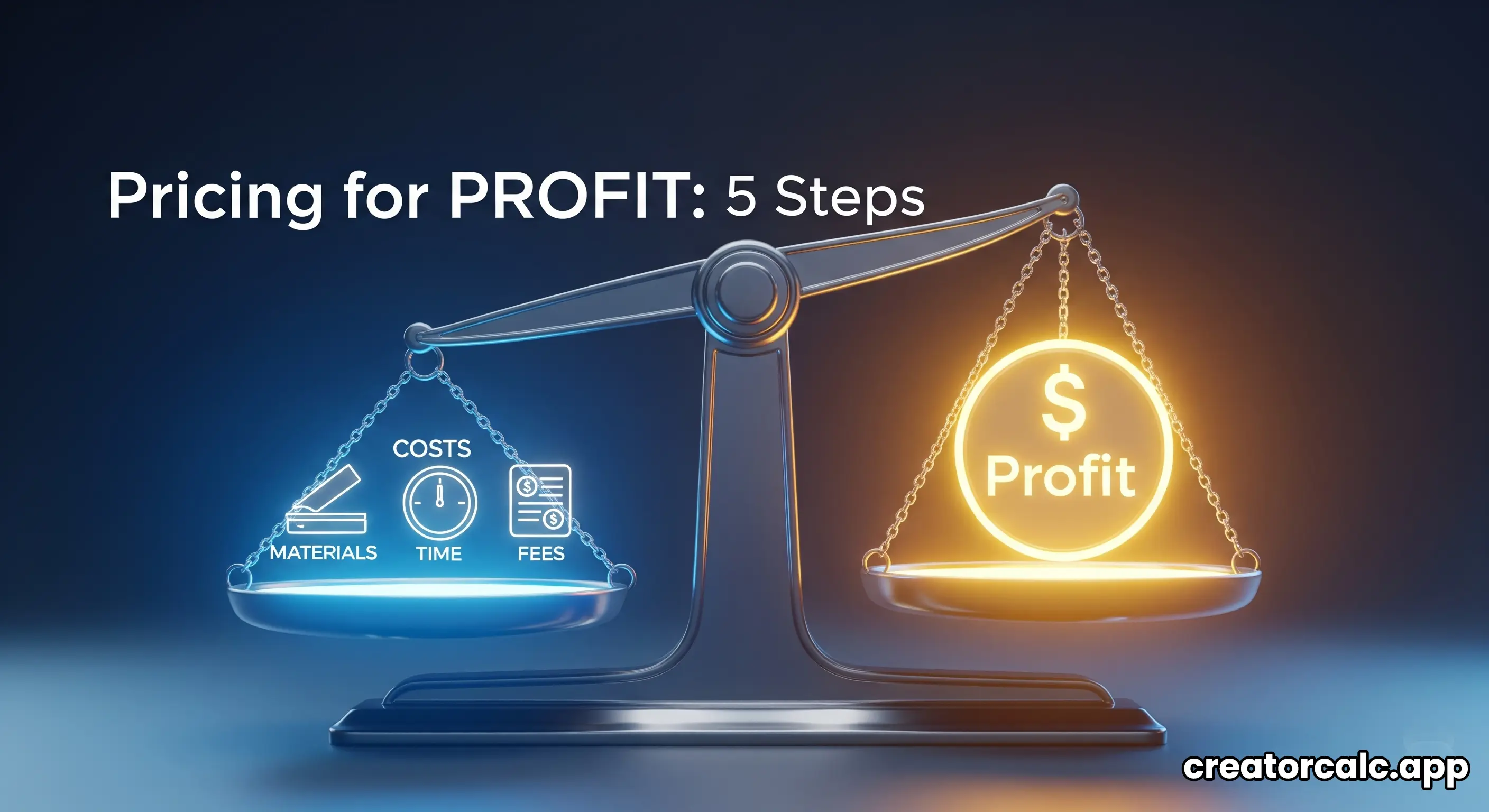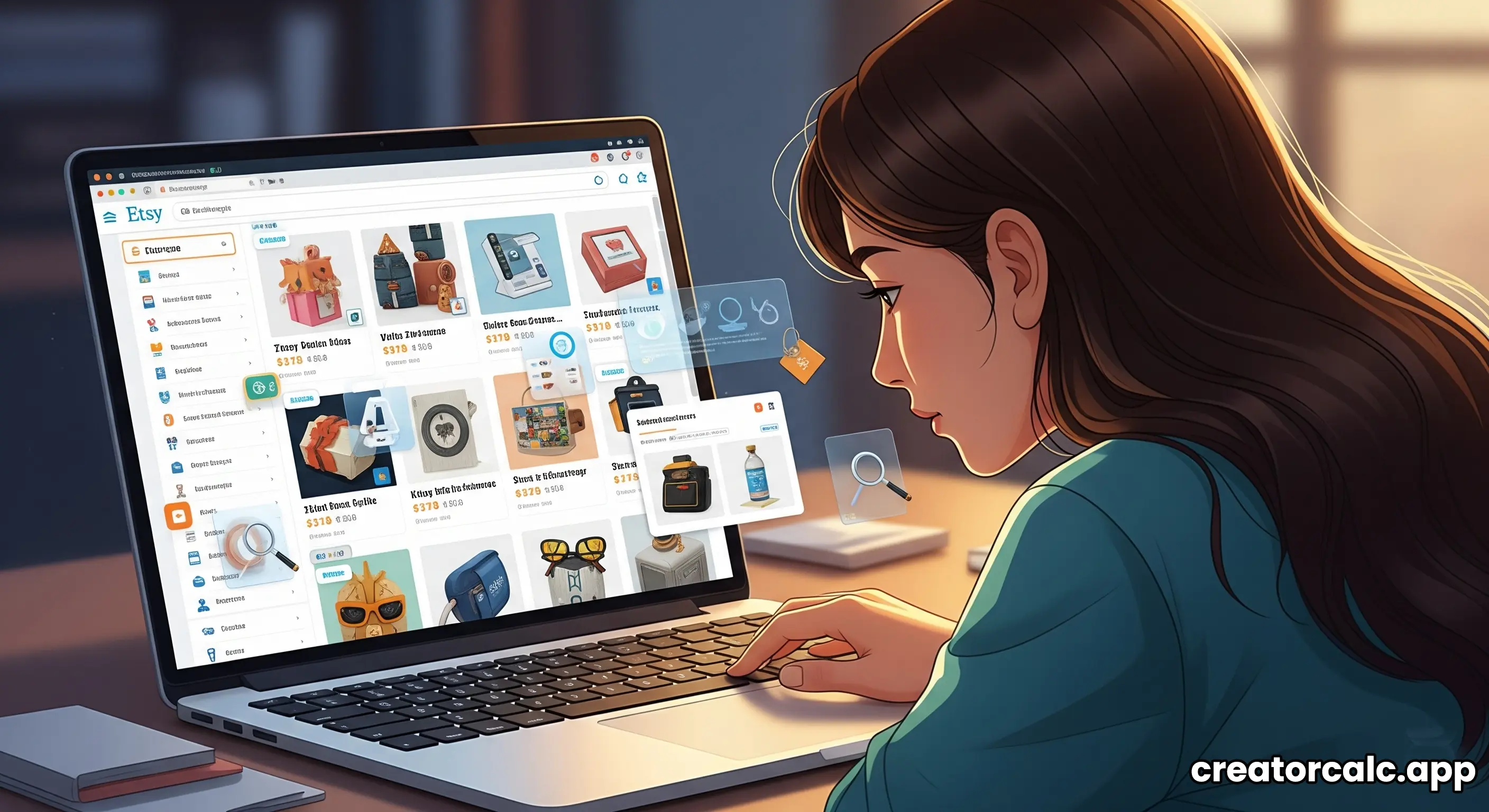As a creator, you pour your heart and soul into your work. But when it comes to money, things get tricky. The biggest question is often: "How should I price my products?" If you price too high, you might scare away customers. If you price too low, you won't make a profit. You might even lose money.
Many creative people struggle with this. They often undervalue their own work. This guide will solve that problem for you. We will share a simple, 5-step formula. This formula will help you find the perfect price for your products. It will cover your costs and ensure you make a healthy profit.

Step 1: Calculate ALL Your Costs
This is the foundation of your pricing. You must know how much it costs to make your product. If you don't know your costs, you are just guessing. Your costs include two main types.
A. Material Costs
This is the cost of everything that goes into the physical product. Make a list of every single material. Even the small things matter.
- For a painting: Canvas, paints, brushes.
- For jewelry: Beads, wire, clasps.
- For shipping: Boxes, bubble wrap, tape, thank you cards.
B. Time Costs
Your time is valuable! You must pay yourself for your work. Decide on an hourly rate for yourself. Then, track how long it takes to make one product. Don't forget to include time for taking photos, writing descriptions, and packing.
Total Cost = Material Costs + Time Costs
This total cost is your "break-even" point. You must sell your product for more than this price to make a profit.
Advertisement
Step 2: Add Your Profit Margin
Now that you have your costs, it's time to add profit. This is the money you earn after all costs are paid. A common way to do this is to multiply your total cost by 2. This is called "keystone pricing".
Retail Price = Total Costs x 2 (or more)
This might seem like a lot, but it gives you room for marketing, fees, and discounts. You can adjust this multiplier. It depends on your market and product. The key is to have a clear plan to price your products for profit.
Step 3: Research Your Market
Your product does not exist in a vacuum. You have competitors. It's important to see what they are doing. Go to Etsy, Amazon, or other platforms. Search for products similar to yours.
- What are the price ranges?
- Are their products of similar quality?
- How are they presenting their products?
This does not mean you should copy their prices. If your product is much higher quality, you can charge more. Market research helps you understand what customers are willing to pay.

Step 4: Factor in Platform Fees
This is a step many new sellers forget. If you sell on a platform like Etsy, they will take a cut of your sale. These are your Etsy fees. You must add these fees into your final price.
As we covered in our guide to Etsy fees, these include transaction fees, payment processing fees, and potentially offsite ad fees. These can add up to 15-20% of your sale price!
Using our Etsy Fee Calculator is the easiest way to figure this out.
Step 5: Consider Your Perceived Value
Price is not just about numbers. It's also about psychology. "Perceived value" is how valuable customers think your product is. You can increase perceived value and charge a higher price.
- High-Quality Photos: Great photos make your product look more valuable.
- Strong Branding: A beautiful logo and professional packaging increase value.
- Excellent Customer Service: Quick and friendly replies make customers feel valued.
- Uniqueness: If your product is truly unique, its perceived value is much higher.
Frequently Asked Questions (FAQs)
1. What if my calculated price seems too high?
If your price seems much higher than your competitors, review your costs. Can you find cheaper material suppliers without sacrificing quality? Can you make your process more efficient to reduce your time cost? If not, you may need to focus on increasing your perceived value to justify the higher price.
2. Should I offer discounts or sales?
Offering sales can be a good strategy. But you should price your products with this in mind from the start. Your initial retail price should be high enough that you can still make a profit even after offering a 20% discount.
3. How often should I review my prices?
You should review your prices at least once a year. The costs of your materials can go up. Your skill and speed might improve. Regularly check if your prices still make sense for your business.
4. How do I price digital products with no material cost?
For digital products (like planners or e-books), your main cost is your time. You should also consider the value the product provides to the customer. Research what similar digital products sell for. Since you can sell it an infinite number of times, the pricing strategy is different but still needs to cover your initial time investment.